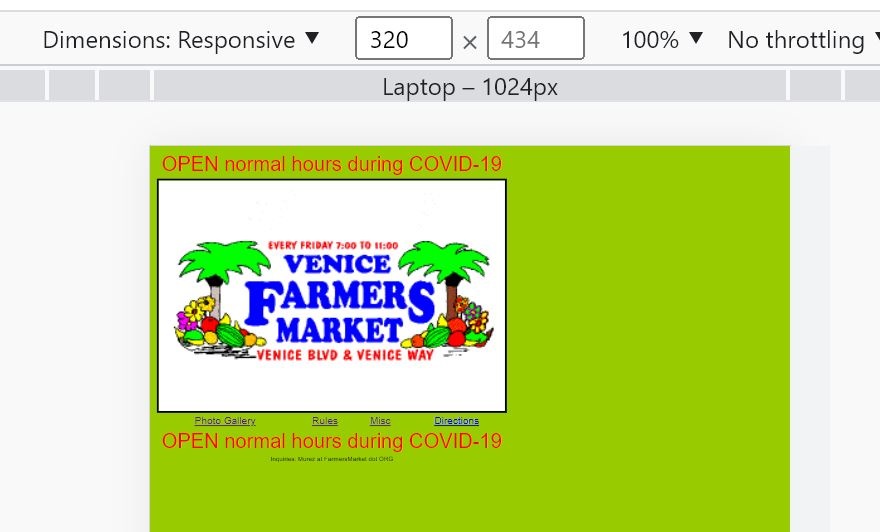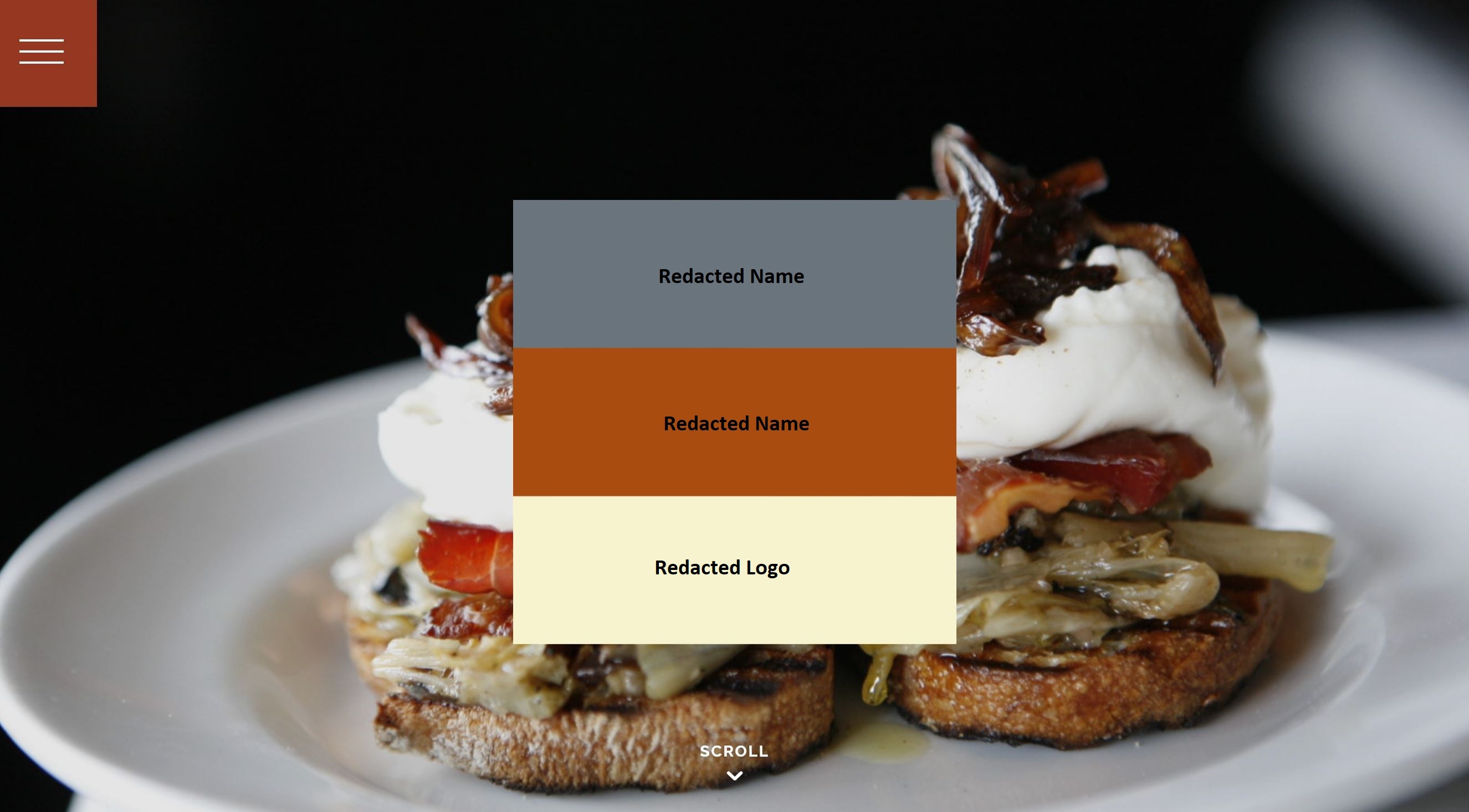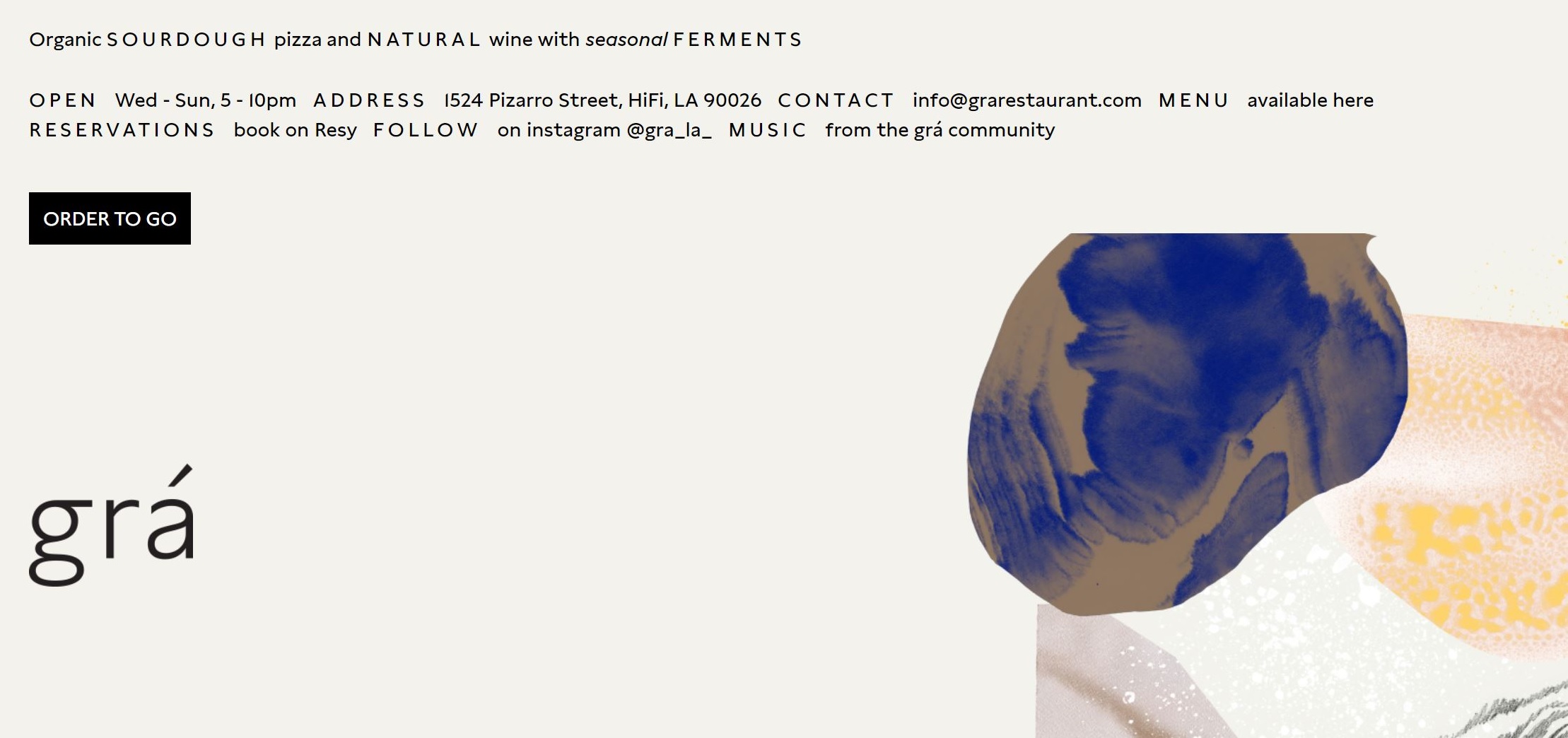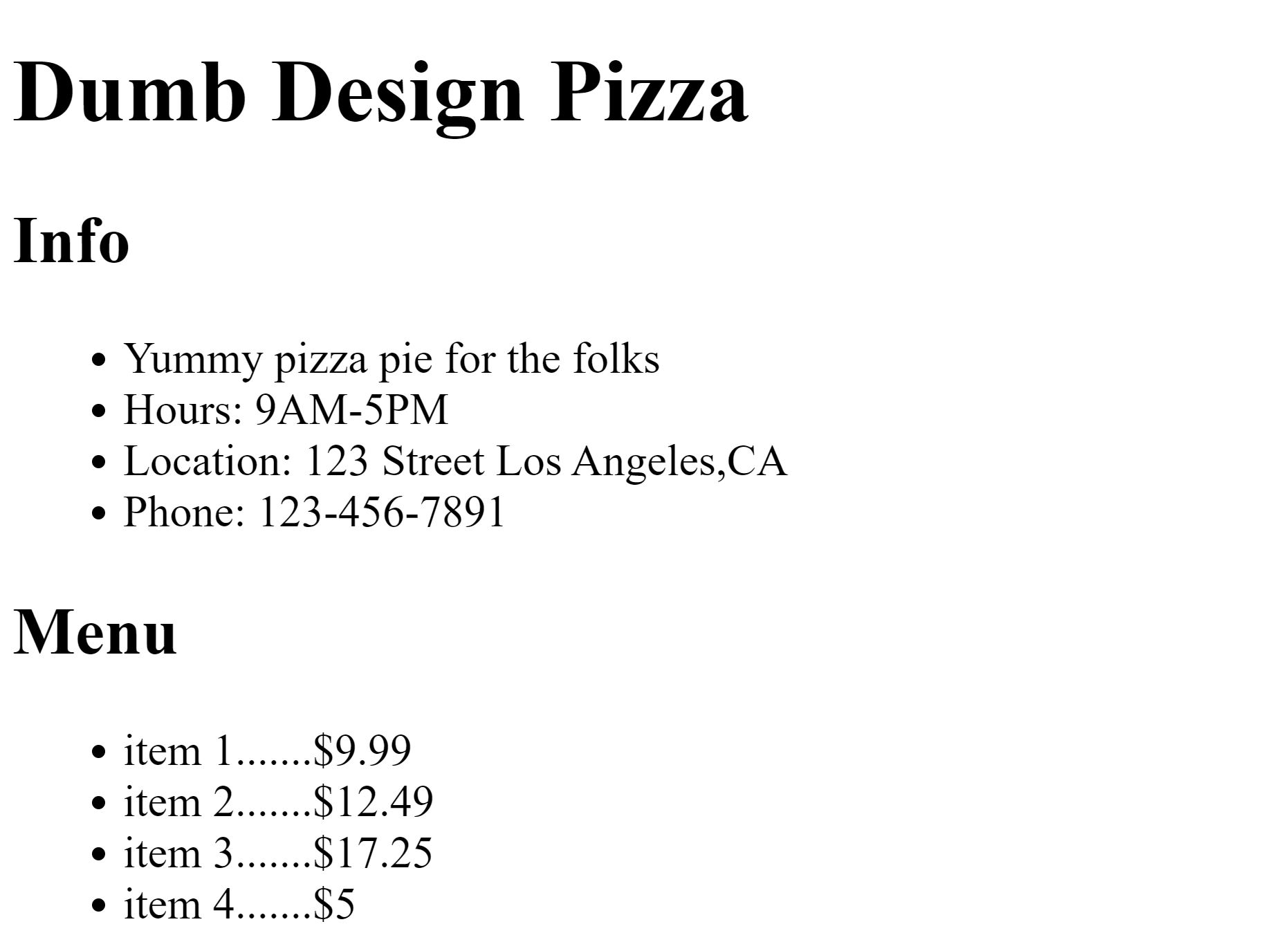Your Website for Your Brick and Mortar Business Sucks :/
The Venice farmers market in Los Angeles has an incredible website. I'd argue it's great web design. It even scales for a seamless mobile experience!

That is not what makes it great though. What makes it great is that it tells me all the info I need to know as fast as possible.
Unfortunately, this is not the case for many brick and mortar businesses with websites. Most try to be too flashy without actually saying what I need to know. So I'd like to take a moment to talk to you about the good word of web design for local brick and mortar businesses - restaurants, stores, events, etc...
Reasons to Visit the Website of a Physical Thing/Place
There are very few. If you run a business that exist in the real world, most people are not coming to your website to be entertained or amazed. The info people actually need is some combination of the following:
- Hours of operation
- Location
- Menu
- How to make reservations
- Phone number
- An elevator pitch - 1-2 sentences
That's it. Full stop. The Venice farmers market does this. You go to the site and there is no further exploration to be done. You have all the info you need. You can go off into the world to enjoy the thing you wanted to do. Sure, they could have done this and that, why is the info on an image, and blah blah blah, but its better than 99% of local small biz websites.
Example of Bad Design
This is a real website of a popular restaurant in Los Angeles. I've removed their name and logo to spare them the internet bullying (it's a good restaurant, they don't deserve this). However, they are a great example of things I see over and over again. This is the landing page:

Gouge my eyes out. Beyond the useless landing page, you have to scroll through walls and walls of text and images in order to find any info of real value. Alternatively, of course, you can
- click the hamburger (could have read the info you needed by now)
- read a list of menu options (could have read the info you needed by now)
- navigate to a new page (geez this is getting dumb)
- peruse over the new page to find the info you want (is this even the right page?)
I'm being dramatic, but its still a valid point - I don't want to play dora the fuckin explorer. I'm just trying get the info I need to show up. So cut that shit out!
Example of Good Design
I'll link to this page since I'm saying positive things about them - gra does it right (lmao they literally updated their website the day I posted this. It's a little worse now, so see the image below). They simply list all the info you could possibly need on the home page. There isn't much to navigate to because there shouldn't be much to navigate to. Refreshing!

The Power of Dumb Design
If your landing page looks like the bad example above, 10 times out of 10 I'd prefer the design below.

Don't underestimate the power of stupid simple design. Just look at Berkshire Hathaway - a company that makes billions a year, yet chooses a design that just does what it needs to do. It's minimal, fast, cheap, and easy to maintain. It works. A local business website should not be any more complex than this. Ever. If you can scroll on your restaurants website you are probably doing too much. If you have a drop down navigation menu you are probably doing too much.
How to Stop Over Designing the Web for IRL Things/Places
If you are building a website for a local brick and mortar, or even an instagram page for your local business ask yourself:
- Why would someone be on my website or social media?
- How do I help people get to my business and spend money?
If you are a brick and mortar type business paying exorbitant rents in dense cities, you most likely do not make money on the internet. You make money when people show up in person to your establishment. Therefore your goal on the internet is simple: give people the info they need to show up.
Harness the design of the Venice farmers market - short, sweet, and to the point.